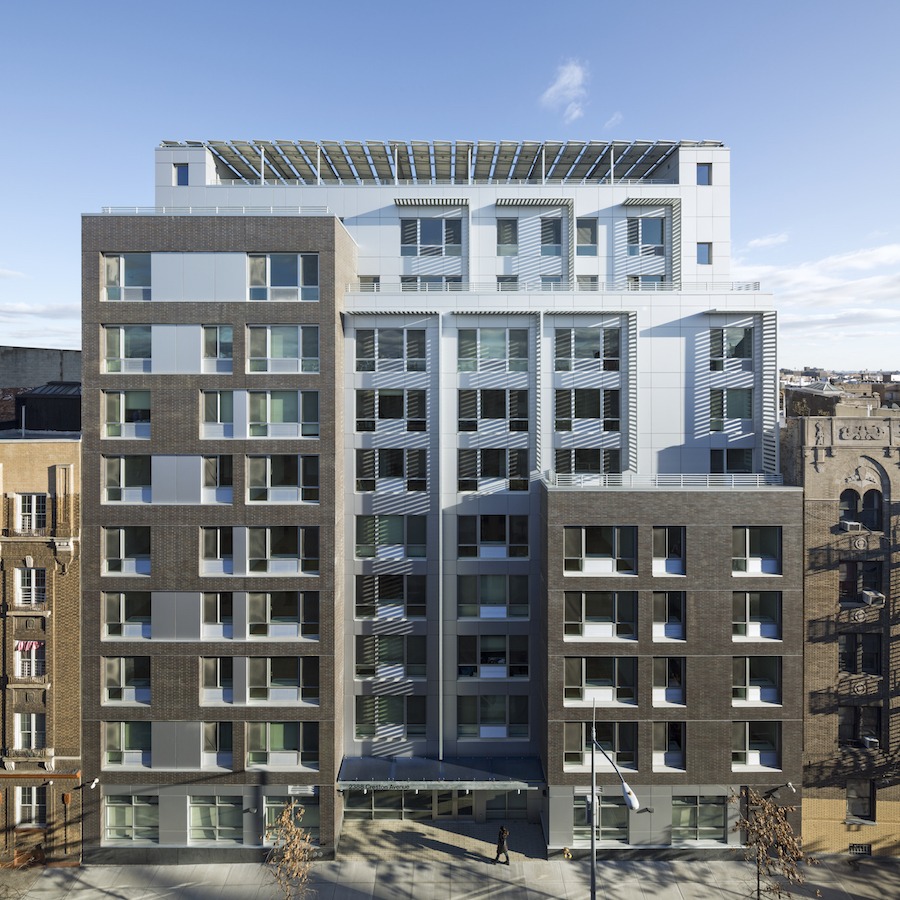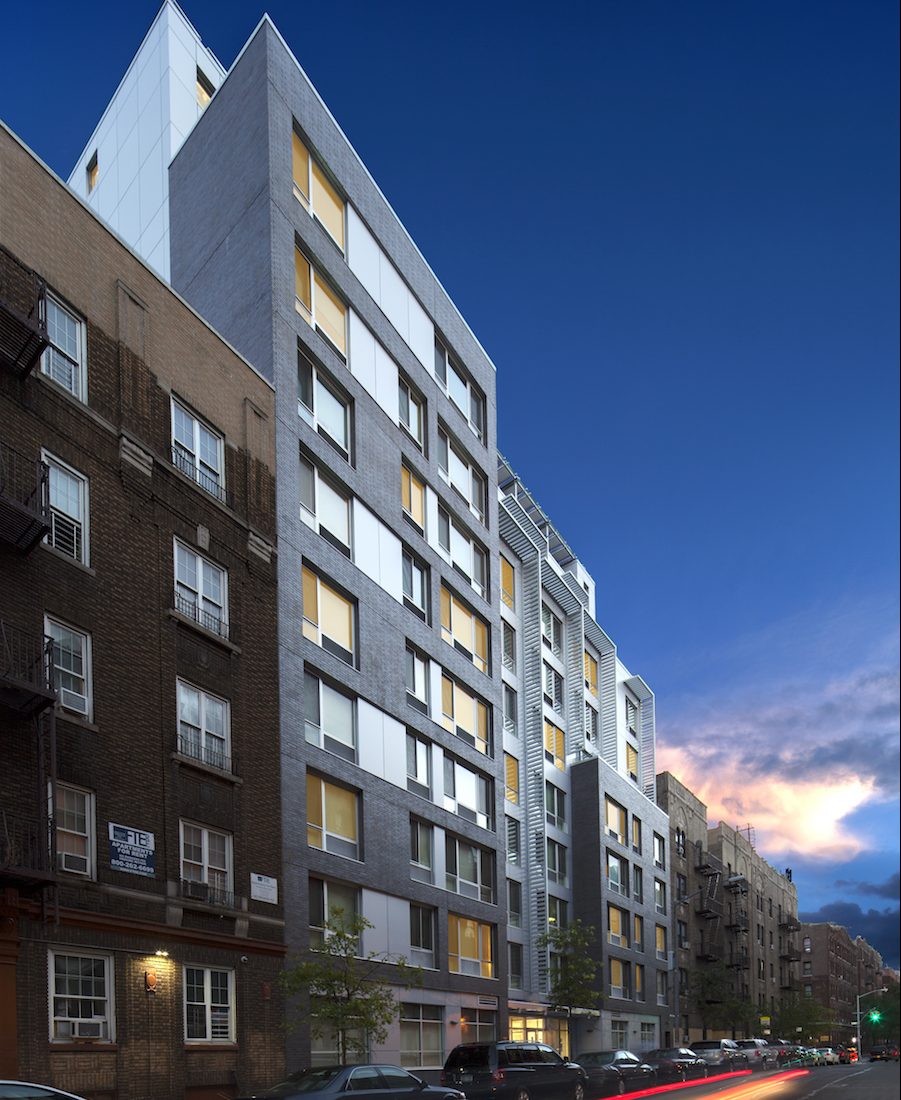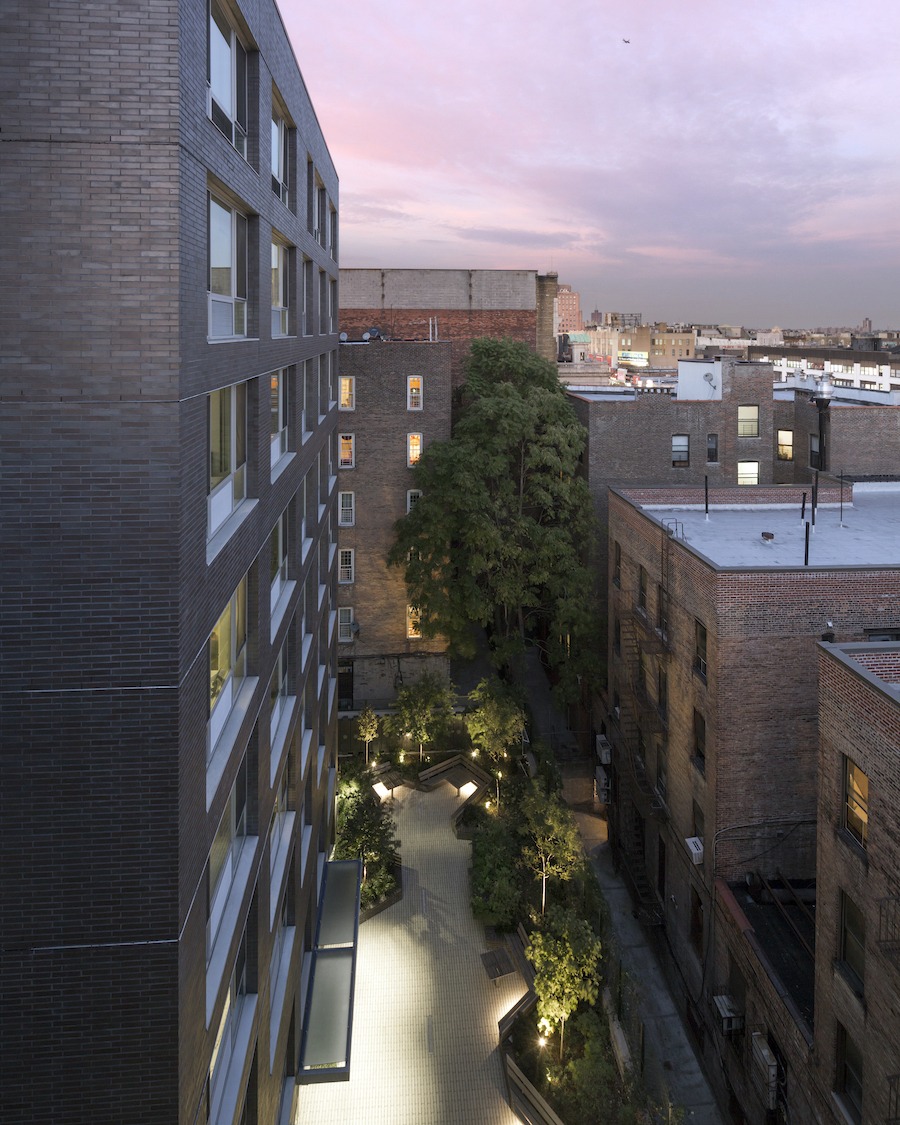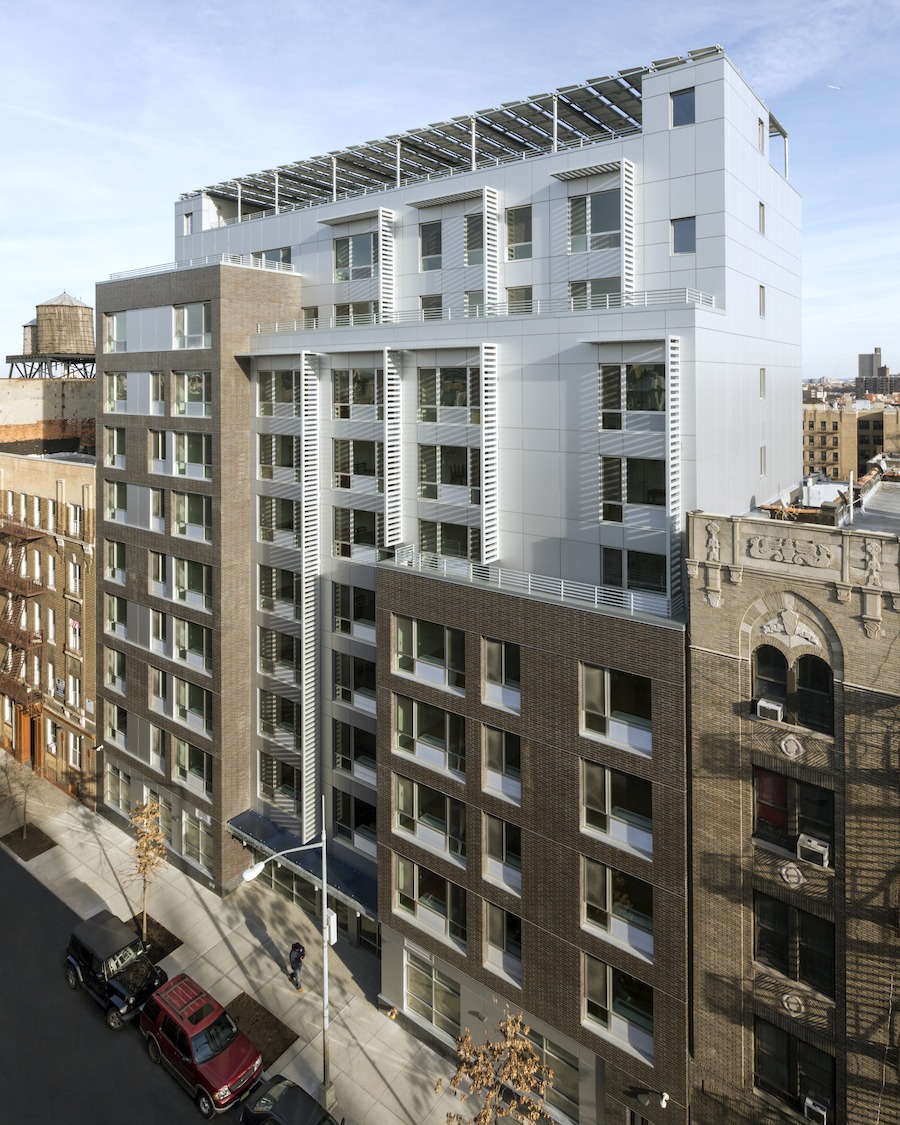
The Volunteers of America in Greater New York and the Housing Collaborative, LLC joined forces on a unique multi-family housing project in the Bronx. The $24 million Creston Avenue Residence was to be a combination of affordable and supportive housing. In addition to low-income families, residents would include those who had been homeless, veterans, high-need Medicaid recipients, and others with special needs who could not otherwise depend on stable housing.
Before ground was broken in early 2015, the project faced a series of challenges. In addition to meeting the needs and wishes of various stakeholders, the developers wanted a building that would architecturally blend in with its surroundings while also providing a progressive design and environmentally-sound direction for the future. However, the apartments would go up in an area where most of the buildings surrounding it dated to the early part of the twentieth century. It was also important that this affordable housing project not look like other developments that were meant to meet the needs of low-income residents. Creston Avenue Residence needed have the look and feel of a lucrative New York City property.
Neighborhood History
The Fordham area in the western part of the Bronx saw its population boom in the 1920s and 1930s when middle class and working class families moved there in droves from Manhattan. In addition to cheap and convenient subway transportation, Fordham’s new residents were drawn by what was then considered modern housing options, which included sturdy, utilitarian five- and six-story brick apartment buildings. For many New Yorkers, these structures became synonymous with the Bronx. By the 1970s many of those buildings were destroyed or in seriously poor condition following a wave of arsons and general neglect. The city began to rehabilitate many of the tenement-style apartment buildings and converted them into low-income housing. Those structures that couldn’t be salvaged were torn down, which left a large number of empty lots.
Still, many of the buildings from that earlier era remain and comprise a significant portion of the community landscape. The Fordham area has retained much of its architectural character from an earlier era, and, in some ways, little has changed along Creston Avenue from 80 years ago. Magnusson Architecture and Planning (MAP) of New York City met their challenge by creating a truly modern design that filled in one of the empty lots while also paying homage to the character of the neighborhood. They did so by incorporating brick as a key element.
 The project’s designers and builders chose bricks in various shades of taupe, gray, warm red, and eggplant that has provided a subtle color contrast. The masonry is similar in proportion and material to that of surrounding buildings, but with sufficient shift in tone to mark it as something wholly original. The brick complements the facades of neighboring buildings by embracing their masonry style. Though it is a completely modern design, the brick work on Creston Avenue Residence delivers a seamless link with the buildings on either side.
The project’s designers and builders chose bricks in various shades of taupe, gray, warm red, and eggplant that has provided a subtle color contrast. The masonry is similar in proportion and material to that of surrounding buildings, but with sufficient shift in tone to mark it as something wholly original. The brick complements the facades of neighboring buildings by embracing their masonry style. Though it is a completely modern design, the brick work on Creston Avenue Residence delivers a seamless link with the buildings on either side.
Three sections comprise the development, which at ten stories is much taller than the five- and six-story buildings around it. However, the architecture makes this less obvious to passersby. On one side, the brick face on the new construction rises only to the sixth floor, with the remaining floors set back. On the other side, the brick face rises to the ninth floor with the tenth floor set back. The metal-clad center portion is also set back from the brick sections, which mitigates the fact the building is taller than its neighbors. The brick design continues in the interior, where it is a key element in the lobby of the central section. The three distinct sections further minimize the scale of the project by giving the appearance of three separate buildings.
The masonry, whose thermal mass qualities make it a naturally energy-efficient material, supports another key goal of the project, which was to achieve platinum LEED certification. The development also meets the goals of the New York State Energy Research and Development Authority regarding multi-family construction projects.

